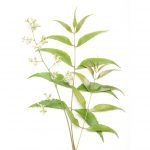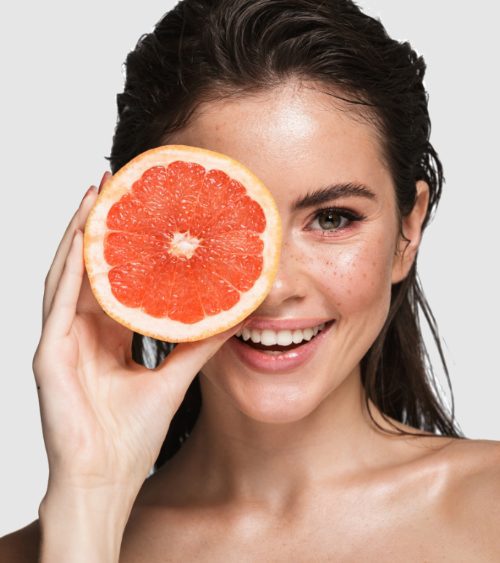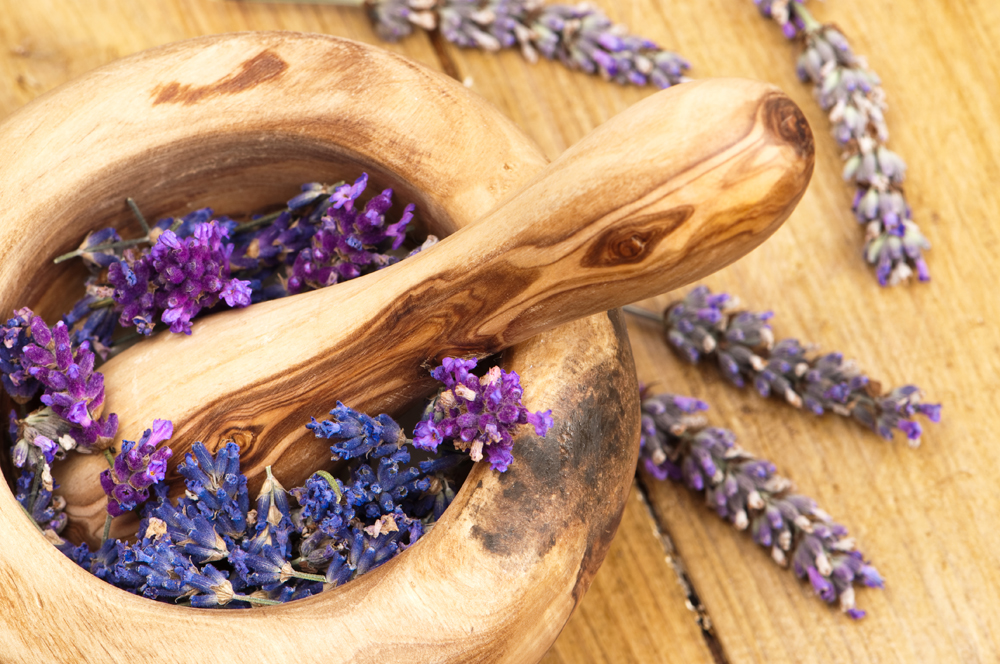
We use only the finest natural ingredients in our products. Here is a list of some of them along with some information on their origin, history and benefits.
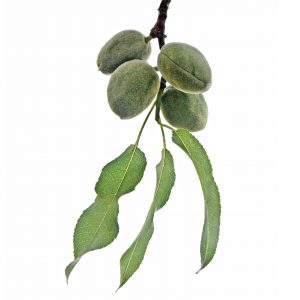  |
Almond OilThe almond originated in the Middle East and spread from there throughout the Mediterranean. Greeks and Romans revered this pretty bush thousands of years ago, for its tasty kernels as well as its oil-rich properties. It is repeatedly mentioned in ancient writings. While a distinction exists between sweet and bitter almonds, oil can be extracted from either. The sweet almond variety is the common choice today. Due to its smooth application, almond oil was, and still is, one of the most popular oils, where it is predominantly used as a carrier oil to lubricate and nourish the skin and work in conjunction with other essential oils. As well as giving the skin nourishment, it can reduce wrinkles and reverse the signs of ageing. Rich in protein, this oil contains Vitamins A and E. |
|
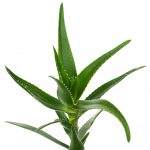  |
Aloe vera
Thriving only in cultivation, this plant grows in abundance in North Africa, but it can be found elsewhere in the world. Historical accounts show that it was used as herbal medicine as early as the 1st century AD. Its special properties seem to have a rejuvenating, healing and soothing effect. Recent studies suggest that it might be generally beneficial in wound-healing. This includes burns, where recovery could be delayed by infection. Traditionally, it has had a firm place in many cultures where it was used as a therapeutic skin application, and it is thought that the antimicrobial agent Saponin may be responsible for this. |
|
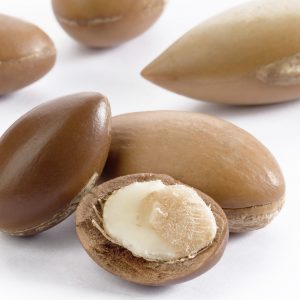  |
Argan oilThe Argan Tree is native to one country: Morocco. As a rare and endangered plant it stands under protection, and its precious oil is now considered the rarest in the world. While Berbers once collected the kernels one by one, increased demand has prompted the Government to give support towards commercial production projects, which have significantly improved women’s lives through the establishment of local cooperatives. The oil protects against UV damage and reduces the ageing process by restoring the skin’s natural barrier. A normal pH balance is maintained and collagen production encouraged, while gentle re-hydration ensures added softness and elasticity. Contains Vitamin E, phenols, carotenes and squalene. Rich in fatty acids and nutrients. |
|
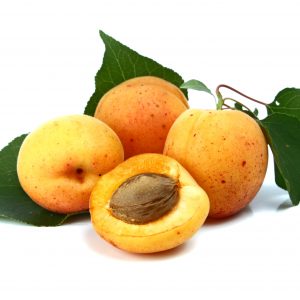  |
Apricot kernal oil
This oil has often been used in Chinese medicine as treatment for inflammatory problems and skin disorders. It is mild and non-irritating. It penetrates the skin easily and reaches deep into the tissues where it nourishes and acts as moisture control and general harmoniser. This oil is good for all skin types. It soothes dry or itchy skin and also restores the balance of oily skin. As a carrier it blends well with any essential oils and is readily absorbed. Vitamins A D and E are present, as well as an abundance of essential fatty acids. Reduces fine lines and spots, blanches spots and levels lumps. (Not shown to be effective in cancer treatment.) Suitable for application in psoriasis, eczema or dermatitis. |
|
  |
Avocado oil
The avocado is a fruit, and the Aztecs called it ‘butter pear’. Its oils have always been known as an excellent carrier which provides high skin penetration as well as rapid absorption. Originally from South America, the avocado is now being cultivated in several different climate zones around the globe. While these days some oils may undergo the process of bleaching, the cold-pressed and unrefined traditional method seems to be the preferred way of bringing out the best in the avocado’s natural properties. The deep green colour also shows the presence of chlorophyll as an added health bonus. A basket of mono-unsaturated fats help healing and slow the ageing process. Regenerates skin which is dehydrated and undernourished, and moisturises mature skin which has been exposed to sun or other damaging climate conditions which makes it particularly good for psoriasis and eczema. Contains: Vitamins A E D B1 B2, Carotenoids (lutein), Lecithin, sterols, Amino acids and fatty acids, Potassium, which is sometimes called the ‘youth mineral’ |
|
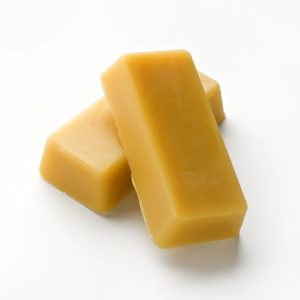  |
Bees wax
This natural product from the honeybee has been known for thousands of years, and it is rated amongst the first plastics ever to be used. Egyptians and Romans were aware of its outstanding properties, and Vikings carried it on their boats. Bees Wax never goes bad and for easy application it can be heated and reused. Its structure shows esters of fatty acids and there are two different types of the product, European and Oriental. In skin products it is often used as an emollient. When applied to the body it creates a protective barrier, while still allowing the skin to breathe. The rich smell and golden colour are pleasing to the senses, while anti-allergic properties and the ability to discourage fungal growth also make it an antiseptic agent in wound-healing. |
|
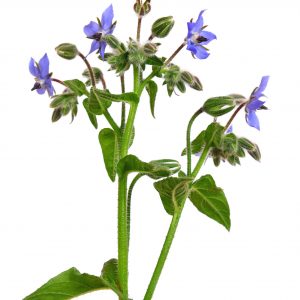  |
Borage oil
This pretty plant, often called ‘Starflower’, is actually a herb, and as a native to Syria, its use goes back some 1500 years. Having spread across the Mediterranean, it can now be found all over the world. As a cold-pressed oil it can encourage healing as it soothes the skin and restores the intercellular moisture barrier which may be dry or damaged. The high percentage of gamma linolenic acid (GLA) contained in the seed oil is instrumental in the regeneration of skin cells. New growth is promoted and blemishes, spots or wrinkles become visibly reduced after application. Effective for the reduction of rosacea. Can be used to treat eczema, psoriasis and dermatitis. Reduces cradle cap in infants. Contains Omega 6 – GLA and other Fatty acids |
|
  |
Calendula
The Marigold flower’s native home is the Northern Mediterranean, but the plant can thrive far north and survive in poor soil. For centuries, the gold and orange flowers have been part of the common portfolio of healing herbs, and marigold poultices were well known to our ancestors when they needed to treat cuts, scrapes, bruises, burns, and minor infections of the skin. The plant’s properties are astonishingly diverse. Known as anti-inflammatory, anti-bacterial, anti-septic, anti-fungal and anti-viral, the natural particles deal with scarring, chaffing, burning, swelling, bruising, infection, as well as insect bites and stings. Regular use is said to give the skin a youthful glow. Stimulates lymphatic system and increases protein metabolism. Reduces pressure sores. Due to being viscous this oil lends itself to application in long strokes during full body massage. Being well established as an effective barrier-cream component when reducing nappy rash, the healing ingredients accommodate a baby’s delicate and sensitive skin, while also speeding the recovery through cell regeneration. Suitable for children Contains Vitamins A and C, Phosphorus, Anti-oxidants, carotenoids and saponin |
|
  |
Cedar wood
There are several trees, namely cypresses and pines, whose bark serve as provider of cedar oil, and the different Latin names give an indication of the original source. Cedar growth is wide-spread. The oil has been used since biblical times when it was extracted from the Cedar of Lebanon, and Sumerians, Egyptians and Tibetans were aware of its healing and sedative properties. Chest infections, bronchitis and respiratory problems may be relieved after applying the oil, which can also be effective in treating painful joints. Contains Cedrol and Cedrene |
|
  |
Chamomile essential oil
There are two types of Chamomile and their properties have a slightly different effect. Chamomile was known to the Egyptians who considered the flower sacred and dedicated it to the sun and moon, because it could cure fevers as well as have a cooling effect. For centuries it has been part of the old world apothecary before being introduced to America, and it was used to treat bruises, allergies, stress and depression. Chamomile is considered a powerful medicinal herb, and as an all-round essential oil it is soothing and gentle when treating rough, red or sensitive skin, while also having properties to take away pain and alleviate tension. When used topical for particular skin conditions, it acts as antiseptic and antibiotic, and the results can be astonishing where healing of small wounds is concerned. Being gentle and soothing, it acts as sedative and tonic, not only for the skin, but for the whole body. Women can apply it to relieve monthly tension as it has a strong antispasmodic effect. Good for eczema, acne and dermatitis. Suitable for children and babies. Use with caution when pregnant. Contains Apigenin and Alpha bisabolol |
|
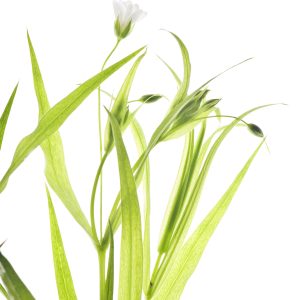  |
Chickweed
This plant is native to Europe, and it has been used as a remedy by medieval herbalists who valued it for its anti-inflammatory effect. It was later introduced to America. Applied as oil during body massage it is renowned for its lubricating qualities. The skin becomes thoroughly nourished, healing is promoted and urticaria and other allergic rashes may be alleviated. Clears itchy skin. Good for allergies, eczema, acne and psoriasis. Contains Saponins, Vitamins A B1 C, Oleic acid |
|
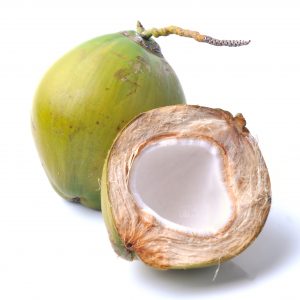  |
Coconut oil
This oil was part of the Ayurveda, the traditional Indian medicinal system. Today, it is used world-wide and its healing properties in the area of skin care are well documented. The unusually high content of saturated fat (>80%) allows the oil to keep fresh for up to two years. As a strong moisturiser it can treat irritated or inflamed skin. As it is antimicrobial, antioxidant, antifungal and antibacterial it can promote wellbeing, delay the appearance of wrinkles and rejuvenate sagging skin. Good for dermatitis, eczema, psoriasis and other dry skin conditions. Rich in fatty acids, lauric acid, linoleic acid, acprylic and capric acid. |
|
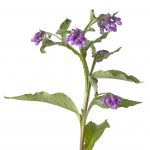  |
Comfrey plant extract
Also known as ‘knitbone’, this plant has been reported as a medicinal herb since 400 BC. Greeks and Romans used it as remedy for heavy bleeding, and it was also revered as a cure for wounds and broken bones. Treating bronchial problems may have been another form of application. Contains allatoin |
|
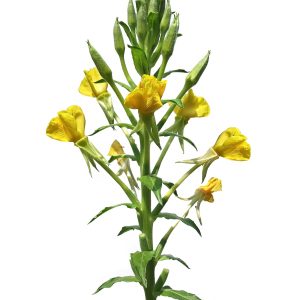  |
Evening primrose oil
Originally from Mexico this herb has spread across the Americas and can now be found in most temperate regions. The cold pressed oil and its pleasant fragrance have been valued as part of women’s health care for a long time, mostly as a relief for monthly tension, although some of the properties attributed to its use as healer of arthritis, eczema and cancer have remained unconfirmed. The high content of fatty acid makes it an excellent skin agent as it hydrates, softens and soothes dry and irritated skin. Adding firmness and elasticity it can also prevent premature ageing. It is said to reduce dark circles under the eyes, and a youthful look may be achieved as it adds moisture to produce a strong and subtle complexion. Due to the fine texture it is mostly used with other carrier oils. Suitable for babies and young children. Contains Vitamin E, Omega 6 – GLA, Fatty acids |
|
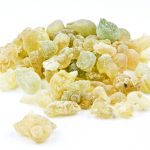  |
Frankincense oil
The name means ‘pure incence’ and it is obtained as resin from the ‘boswellia sacra’ tree, which can thrive under the most arid conditions and even grow out of solid rock. The Latin name gives an indication that it was used as a sacred offering in various cultures neighbouring the Mediterranean, with trading dating back about 5000 years. Besides its use in worship it has long been known to act as a general tonic which soothes the whole body as well as the mind. The oil is valued as a skin agent that can ease aches and pains. Arthritis is one condition which may benefit from treatment with the oil, and it has been found to suppress cancer cells. It is particularly good for depression. Being an astringent, antiseptic, anti-inflammatory remedy, it stimulates new cell growth, improves dry, mature-looking skin and prevents wrinkles. It acts as general pick-me-up for the whole body. Contains several acetates, including incensole acetate which relieves depression and anxiety |
|
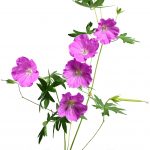  |
Geranium oil
There are different plants known as Geranium and the Latin name gives clarification where the oil has been sourced. Rose geranium is very expensive and may be replaced by another variety. Originating from South Africa and grown in several African countries, it was introduced to Europe in the 17th century. The beautiful smell in conjunction with a calming, balancing and uplifting effect, have made this oil indispensable in body care. Oils from Reunion and Egypt are of the highest quality. It acts as harmoniser on the hormonal system, therefore relieving monthly tension. It eases mood swings and levels anxiety. It also heals wounds and transforms irritated, dry or damaged skin. It can be beneficial for different skin disorders because of its astringent, tonic and anti-inflammatory properties. In beauty therapy, the deodorising effect may be an added bonus. Contains citronellol and geraniol |
|
  |
Grapeseed oil
This modern carrier oil is a by-product of the wine-industry, and the move to use and apply it in health-care is fairly recent. Some claims regarding benefits when used for breast-cancer and other conditions are currently under review, but they have so far not been substantiated. The oil with its light green colour has a fine texture and is easily absorbed into the skin. When used in massage and for topical application, it tones and tightens the skin and minimises sun damage. Being anti-inflammatory, it reduces swelling and acts as a regenerative and restructuring agent. It can be used to moisturise sensitive skin as it repairs damaged capillaries and leaves a glossy appearance. Under-eye circles may be diminished and it can give protection against future tissue damage. May react with anticoagulants. Contains Vitamin E, Antioxidants, fatty acids: oleic acid, linoleic acid, palmitic acid, stearic acid |
|
  |
Green tea extract
Green tea leaves have been known for 5000 years as a healthy addition to the diet. The herbal derivative has been used as a general tonic and booster, and the fact that it slows ageing and reactivates skin cells comes as a bonus. It has been found to reduce the appearance of puffiness, wrinkles, fine lines and large pores. The anti-radiation properties not only improve skin condition, but are also beneficial as a skin lightener. Being an astringent as well as an antibacterial agent, it tightens and cleanses the skin and may also contain anti-carcinogenic ingredients. The antioxidants in the plant are stronger than Vitamins C & E. Contains L-theanine which reduces stress and anxiety, Green tea catechins, GTC, Flavonoids |
|
  |
Jasmine oil
Originally, this beautiful flower grew in Persia (Yasmin) as well as in India and China. It was brought to Europe in the 16th century. Today, it is predominantly grown to supply the perfume industry, and plants and flowers cultivated in Egypt and India have become renowned because they produce the sweetest smell. Use of the oil can have a beneficial effect on the female reproductive system, as it relaxes and soothes the nerves. The fragrance is also known to be an effective aphrodisiac. As a skin agent it reduces stretch-marks and scarring and can tone different skin-types, while either dry or greasy skin will be accommodated. It is suited for irritated and sensitive skin alike. Contains over 100 ingredients, including indol and geraniol |
|
  |
Jojoba oil
This is a cold pressed oil (in fact, a liquid wax), which is obtained from the seeds of the jojoba shrub, a native to Arizona and Mexico. Since replacing the use of whale oil in the 1980s, it has become firmly established as part of the beauty industry – something which may be attributed to its deeply penetrative qualities and the added advantage of a high shelf life. Readily absorbed with protective qualities, it makes an excellent carrier oil when moisturising the skin, as it unclogs pores and lifts imbedded impurities. It also reduces wrinkles, lightens skin and helps heal scars. Rich in fatty acids – palmitoleic acid, oleic acid and many others |
|
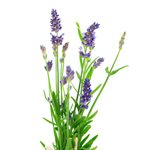  |
Lavender essential oil
When the word ‘nard’ appears in ancient writings, this beautifully fragranced oil is being referred to. Due to its calming and relaxing effect as well as antibacterial and antifungal properties which support healing and recovery, the Romans used it for various applications. Today, spread of this plant extends from the Canary Islands to India. France and Bulgaria produce the biggest crops, but it is cultivated in many countries. Its use as an all-round therapy oil comes as no surprise, as it is one of the safest oils to use. It reduces anxiety, detoxifies, aids sleep and helps healing. Applied to the skin it tones and revitalises all skin types and can be effective against damage from sunburn. Its anti-inflammatory and pain-relieving properties make it the ideal agent for rough or damaged skin. Contains linalool and linalyl acetate |
|
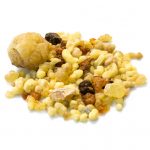  |
Myrrh essential oil
The resin of this plant has been used since Egyptian times and is well-known for its specific mention in ancient Christian writings. From Southern Arabia it spread throughout the Mediterranean and then further east. It has found a firm place in Ayurvedic and Chinese medicine, foremost for its analgesic and antiseptic properties, but also for being able to effect emotion and clear the mind. Today it is used in different churches on a daily basis. In skin care the oil can have a purifying, revitalising and uplifting effect, and it is considered a good therapy for wrinkled, rough or cracked skin. It may be beneficial where scars, skin infections and ulcerations are present. It tones and closes pores. Contains acids, phenols and terpenes |
|
|
|
Neem oil
This tree has been used for over 2000 years in Ayurvedic medicine. Being drought resistant it survives in dry conditions and its origins are found in India, Pakistan and Bangladesh. Today it is especially cultivated in the Sindh Province. As a firm ingredient in traditional skin therapy, the oil can be relied on where cracked or damaged skin is involved, and its properties can fight infection, viruses, fungi and inflammation. It also soothes wrinkles, restores elasticity and reduces the signs of ageing. An even tone as well as a youthful glow may be achieved with regular use. Due to a strong scent it is often used in conjunction with other carrier oils. Rich in emollients, fatty acids, antioxidants and carotenoids. |
|
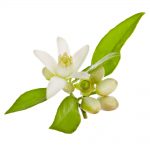  |
Neroli oilThis oil is harvested from the blossoms of the bitter orange tree, and in the 17th century one Countess of Nerola gave the scent its famous name. Soothing for the nervous system, it acts as an aphrodisiac which can usher in inner peace and contentment. Apart from being an antidepressant, it also has sedative and tonic properties. This oil regenerates skin cells, promotes smooth skin and restores broken capillaries, meaning it is particularly suitable for mature skin as it heals scars and stretch-marks. Being antiseptic it prevents infection. The beautiful smell can cause relaxation and induce a calm composure. Contains linalool, nerol, geraniol Very relaxing Inci: Citrus aurantium |
|
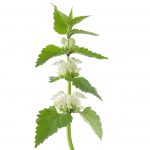  |
Nettle plant extract
The leaves, stem and bark of the common stinging nettle, which grows wild around the globe and has been used in health care for hundreds of years, provide therapeutic agents for various health problems and conditions. The nettle was always considered a good healer for allergies and painful joints. It was also known to relieve urinary tract problems. When applied to the skin it could deal with itching or irritated skin. The anti-inflammatory effect may enhance a natural immune system response. Working as an astringent it tightens the top layers of the skin to relieve irritation, reduce secretions, and improve tissue firmness. The plant contains Vitamins A and C, iron, manganese and potassium Good for eczema, acne and dermatitis Inci: Urtica dioica |
|
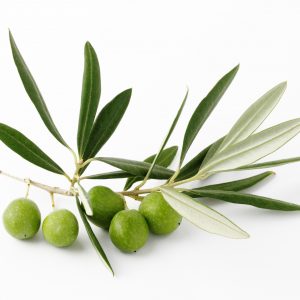  |
Olive oil
This very aromatic carrier oil is harvested from the fruits of the olive tree, which is native to the Mediterranean countries and has been used and cultivated for thousands of years. It was used as a cosmetic to treat dry skin. It does not go rancid easily, and safe storage outside a fridge may be extended as long as a year. The oil can relieve stretch marks and have anti-aging properties. It is equally soothing and healing. Mature, sore or inflamed skin will benefit from a rich texture whose structure is close to the skin’s own oils. Rich in fatty acids, including oleic acid, palmitoleic acid, alpha linoleic acid Inci: Olea europaea |
|
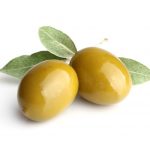  |
Olive squalane oilOlive squalane is one of the hottest ingredients in natural skincare at the moment. Olive squalane hydrates the skin, reduces the signs of ageing, boosts cell regeneration and improves elasticity. It also prevents UV damage and can reduce blemishes. No wonder it is known as ‘Nature’s facelift’! It is odorless, colourless and not greasy. It contains antioxidants that protect the skin from free-radical damage and can speed the healing of facial wounds. Squalane is found in human sebum and naturally occurs in young skin, levels peak in our early 20s and decline from there on. Olive squalane is derived from 100% pure olives, is quickly absorbed and penetrates deep into the skin. It does not clog pores and so can be good for acne. It can be used by all skin types including very dry or acne prone skin. It is non-irritating so works great on eczema prone skin. It is gentle enough to use on baby’s delicate skin but also great for mature skin. Try this ingredient in our Olive Squalane & Vitamin E Anti-Wrinkle Serum |
|
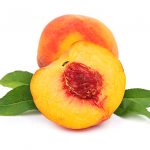  |
Peach kernel oilThis oil originated in China and was brought in the 16th century to America via Spain. Its light, penetrative consistency makes it a good carrier oil in body massage. Gentle and soothing, it calms skin irritation and sustains the skin’s natural moisture balance. It promotes growth and can reverse the signs of aging. At the same time, dry, flaky or sensitive skin will equally be rejuvenated. Contains fatty acids, oleic and linoleic acid Vitamins A E B Inci: Prunus persica |
|
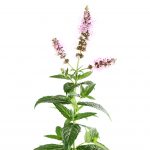  |
Peppermint oil
Originally from Europe and now spread all over the world, this oil has been used for thousands of years. It contains menthol, which nourishes dull skin and boosts the texture of oily skin. May help with facial blemishes. It is renowned for its antibacterial and cooling action. Contains fatty acids, omega 3, Vitamin A Inci: Mentha piperita |
|
  |
Rose oil
Several types of rose provide their precious petals for the production of this very expensive and beautiful essential oil. By tradition, the following may be found: The ‘French’ rose comes from the Caucasus, the ‘Cabbage’ rose is a native of Persia, and the ‘Damask’ rose originates in Syria. The main supplier of rose oil is Bulgaria. Apart from a lovely smell, this oil is famous for lightening the senses and providing stress relief. It benefits the skin as it nourishes and moisturises dry skin and restores elasticity and tone. The appearance of wrinkles can be reduced, and it is good for all skin types. As an antiseptic and astringent with anti-inflammatory properties, application can relieve redness and swelling in dry and mature as well as sensitive skin. It is soothing and rich. Contains antioxidants Great for mature skin. Inci: Rosa damascena |
|
  |
Rosehip oil
This oil is extracted from seeds in the Andes. Mature and sun-burnt skin will benefit from using this oil, and it also diminishes scarring and photo-aging. The skin is smoothed, as the oil improves the moisture level and leaves skin looking radiant and glowing. Dry skin will be nourished and problem skin can be transformed. Contains provitamin A (beta-carotene), Essential fatty acids, linoleic acid (omega 6), linolenic acid (omega 3) and oleic acid Good for mature skin and dry skin conditions such as dermatitis, acne and eczema Inci: Rosa mosqueta |
|
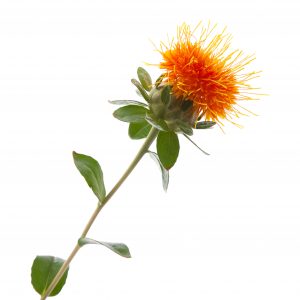  |
Safflower oil
This beautiful plant is one of humanity’s oldest crops. Flowers have been found in ancient Egyptian textiles and Tutankhamun’s tomb was adorned with strings of petals. It was also known and used in China as a medicine. Today, it can be found in India, Mexico and the US where it is grown for its oil-rich seeds. The oil is a lubricant with occlusive properties, maintaining the cell membrane’s integrity and aiding repair. As it keeps the skin hydrated and moisturised, it is good for all skin types, reducing clogged pores, smoothing skin and having an anti-aging effect. Contains fatty acids. Best source of linoleic acid (up to 70%), and a carrier of Vitamins A, D, E and K Inci: Carthamus tinctorius |
|
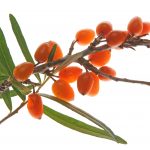  |
Sea buckthorn oil
Being tolerant of salt contained in air and sea, this plant spreads from the Atlantic shores of Europe to north-west Mongolia and China, where it was used in the past to treat skin burns caused by radiation. Today, it is still used on Russian cosmonauts for that reason. Seeds and pulp of the plant are both suitable for oil extraction, yet their oil-compositions differ. With a basketful of fatty acids this oil is beneficial for cell tissue regeneration and it can also slow the natural process of skin maturation. Its anti-aging properties are enhanced by the ability to control inflammation as well as dryness in problem skin. Contain : linoleic acid, alpha-linoleic acid, palmitoleic acid, palmitic acid, tocopherols and plant sterols, Vitamins A and E Good for eczema and acne Inci: Hippophae rhamnoides |
|
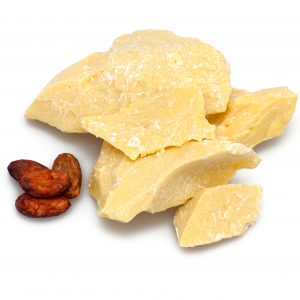  |
Shea butter
This moisturising agent is extracted from the nut of the African shea tree. Its uses are varied, and it also has a firm place in the cosmetics industry, being versatile and readily absorbed. The butter melts on contact and leaves no greasy residue. Regular application may reduce the appearance of fine lines, scars and stretch marks. The anti-inflammatory benefits as well as the emollient properties have made this herbal remedy a welcome soother for sunburn, while it also acts as a sun-blocking lotion due to its moisturising qualities, which provide an invisible radiation screen. Rough skin and small wounds can be treated and dryness reduced. Contains fatty acids and plant sterols, oleic, stearic, palmitic, linoleic, linolenic acids and Vitamins A and E Caution – may not be suitable for people who have a nut allergy Good for eczema, dermatitis and psoriasis Inci: Butyrospermum parkii |
|
  |
St. John’s Wort
Being indigenous to Europe, this plant has been introduced to many temperate areas of the world. It is harvested on 24th June, a day traditionally assigned to St. John, the Baptist, in the Roman Catholic calendar. Applied to the skin this oil can deal efficiently with skin irritations and minor cuts. Being anti-bacterial and anti-inflammatory, it is good for all skin types. Contains hypericin and tannins Inci: Hypericum Perforatum |
|
  |
Sunflower seed oil
This well-known flower grows in many countries world-wide, but the largest crops come from the Ukraine, Russia and Argentina. It has found its way into our kitchens for having health benefits as well as good keeping qualities. Only the black seeds are used for making oil. The gentle effect and its suitability as an emollient make this oil an ideal skin agent. Being non-greasy, it is readily absorbed. The moisturising ingredients improve skin hydration by smoothing and reducing wrinkles and scarring. Redness and roughness are reduced in all skin types, while application can also heal small injuries. Rich in fatty acids – palmitic, stearic, oleic, linoleic acids as well as sterols, squalene, lecithin, tocopherols, carotenoids Good for acne Inci: Helianthus annuus |
|
  |
Sweet orange
The orange was brought to the Mediterranean possibly as early as the first century. Columbus took the fruit along with him when he embarked on his historical voyage in 1492. Today it is grown all over the world. In skin care, oil which comes from the fruit of the sweet orange is renowned for its lovely, light fragrance. The ingredients are known to fortify skin capillaries. Application of the oil may therefore rejuvenate the skin and combat wrinkles as it slows down the aging process. Cracked, dry skin may gain a youthful, radiant glow. Rich in fatty acids, limonene, geranilool and linalool Good for eczema and dermatitis Inci: Citrus aurantium dulcis |

